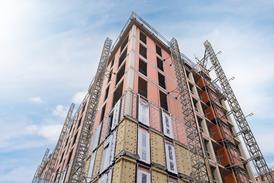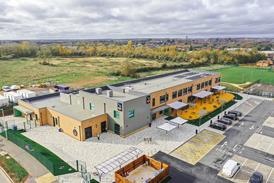Berlin’s Jewish memorial uses abstract art on a monumental scale to commemorate the victims of the Nazi Holocaust

It has taken 60 years for the German government to erect an official monument to the 6 million Jews murdered by the Nazi regime. The length of time suggests the obvious difficulty of producing an aesthetic response to historical events that many have felt could not be directly addressed by artists.
The task fell to Peter Eisenman, the New York theoretician and architect who won an international competition in 1998 and worked with British consulting engineer Buro Happold. Eisenman, who has made a career out of standing conventional architectural theories on their head, took the line that “any attempt to represent [the Holocaust] by traditional means is inevitably inadequate”.
The extraordinary result, which officially opened this week, takes the form 2711 rectangular monoliths in smooth charcoal-grey concrete. They are packed closely together in a large field just a stone’s throw from the Brandenburg Gate and the refurbished Reichstag in the heart of Berlin.
The monoliths are regimented in a dense, rigid grid separated by passageways barely wider than a doorway. They all measure precisely 2.38 × 0.95 m in plan, but they vary in height from a single step to a two-storey building. On top of that, they are all slightly tilted and stand on sloping ground, so that in unison they produce wave-like undulations across the field.
Several dark allusions can be read into the assembly. The concrete monoliths may at first suggest prehistoric stellae or even outsized coffins, and their regimentation echo wartime cemeteries. But Eisenman rejects any literal interpretations. “The space isn’t a graveyard: it should be absent of meaning,” he says.
Instead Eisenman relies on the unnerving sensory effects of walking through the dense maze. The precision and regimentation of the concrete blocks are visibly contradicted by their varying heights and tilts and by the soft, flowing undulations they generate across the field. One influence he has acknowledged is the claustrophobic frisson of getting lost inside a field of full-grown maize. As for man-made precedents, the nearest is perhaps Daniel Libeskind’s disorientating forest of uniformly sloping concrete columns at the Jewish Museum, also in Berlin.
As the field of concrete blocks is devoid of inscription, a small interpretation centre has been provided underground. This lies directly below the concrete blocks, and its interior continues the same theme, with rectilinear projections from walls and ceiling.
The challenge of the £20m project extended into its construction. The concrete boxes were all precast by Geithner and finished with a graffiti-resistant coating. On site, their precise height and angle of tilt was achieved by modifying the four cylindrical concrete legs that support each block. The supporting legs and bases of the blocks were then concealed beneath sand fill and paving slabs.
Through its striking sensory effects, Germany’s Holocaust Memorial achieves a unique visitor attraction. Although its subject is unambiguously repellent, in both form and message, it is a deeply moving act of reconciliation.
Project team
architect Eisenman Architects
civil, structural and services engineer Happold Ingenieurbüro
visitor centre designer Dagmar von Wilcken
landscape architect Olin Partnership
























No comments yet